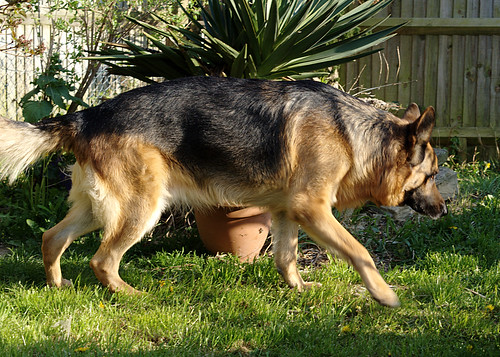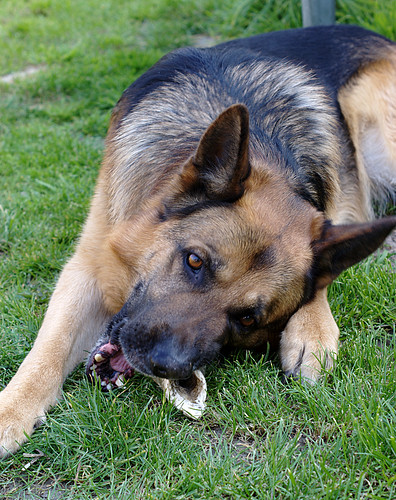
I wanted to close the aperture down a little (around f/5) to increase the depth of field and get more of the dog in focus, however as always I stayed in Aperture Mode for the first few shots. Even though it was a bright and lovely afternoon, his fur is mostly dark, so my camera picked up on this fact and slowed the shutter speed down to around 1/40th.

Here you can see around his snout there is a little motion blur. This is why it's important to always be aware of your settings; to me, the shutter speed sounded fast enough that I didn't even consider it until I looked at the LCD after taking the first few shots.
The general rule of thumb with shutter speed is to try and keep the speed faster than the focal length you're working at. So with my 50mm lens I should at least have been at 1/50th, or 1/60th to be on the safe side. Even at 1/40th, the dog was moving around so quickly and erratically, there was motion blur.
I realised this eventually and switched into Manual mode, stopping down to around 1/80th:

Similar pose, virtually no motion blur; much better! I also opened the aperture by half a stop to f/4.5 to compensate so the shot wasn't too dark, and the beauty of shooting in RAW is that to an extent, as long as you don't go mad with it, you can correct the exposure a little after the fact.
In retrospect I would still prefer to have stopped the shutter speed down even more, to about 1/100th, maybe bumped up the ISO to 200 to compensate, and taken a step back from the dog to help with the depth of field. We live and learn and it's good for me to think about these things even after it's too late, so I know better for next time.

NOM NOM NOM.

0 comments:
Post a Comment